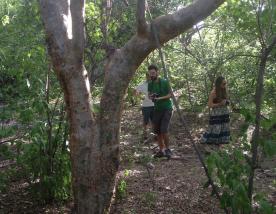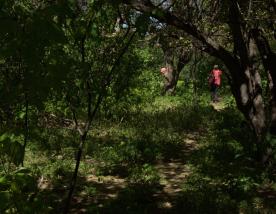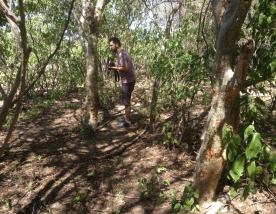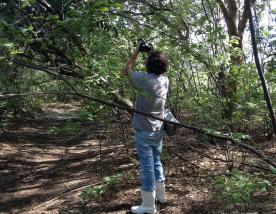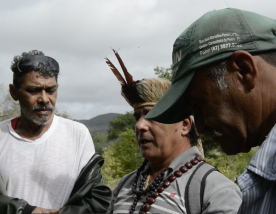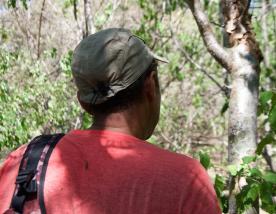The histories of imburana and art intersect with the promotion of the imburana's as raw material for the making of sculptures, the matrix of woodcuts and tools (wooden spoons, troughs, pestle, pipes, banks). It also manufactures colchos, hives for beekeeping, cangas or cambón for the animals to pull carts, hence its name.
The imburana wood is soft and responds well to the cut and the sandpaper. Because it is malleable, and because it is protected ou immuned(forever) from the termite, it is one of the favorites of contemporary craftmens and sculptors of the Northeast. This fact, besides its use as firewood, can be perceived as a sum to the contributing factors for the imburana process extinction.
Efrain Almeida , Manoel Graciano , Nino , Véio , José Bezerra , Manoel Santeiro
are some established artists, among many, who use imburana to do their works, even if their works is done with fallen pieces found in the woods, the relation with nature is extractive.
Carrancas, saints, kitchen tools, sculptures, and crafts, doors, furniture, beehives, cambianos. The shells, leaves, seeds and charcoal would make up an impending Imburana Museum.
The preservation of Imburana also has its history crossed with art. It is from the initiative of some craftsmen and artists that the imburana makes possible its salvation as a species. The Carrancas Workshop - Francisco Biquiba Dy Lafuente Guarany Workshop, in Santa Maria da Vitória - BA, develop a project of reforestation of imburanas. The Association of Santeiros de Ibimirim, has a project of production of seedlings and planting of 1,000 trees. These artists, together with the beekeepers of the region, are defending the tipping of imburana, as a protective measure.
In a context of aggressive deforestation for the sake of commercial agricultural crops and commercial charcoal production, the initiative of such a project Imburana Project to preserve the natural heritage of the caatinga of the Pernambuco sertão is exemplary and didactic.
In a Newcomer's Notes, Lucy Lippard writes that the reconstructive potential of an art practice that restores and reveals the significance of a place to those living in it can not be underestimated by providing alternatives to the voracious view of the dominant culture's nature . This art that occurs outside of conventional venues, makes its place visible rather than simply occupying it is 'place-specific' rather than 'site-specific', incorporating people, economic and topographical forces. It becomes part of building a critique of what has already been instituted and / or in daily involvement. It makes places mean more to those who live or spend time in it. For the author, the Lure of the Local is embedded in land, history and culture and the possibilities they hold for place-specific, place-responsible "public art » . (The Lure of the Land, 1997).

